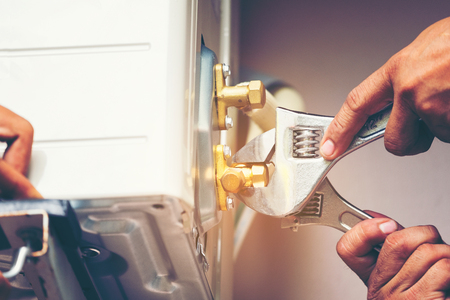Introduction to Electrical Safety Obligations in the UK
Ensuring the safety of electrical installations is a fundamental responsibility for property owners and landlords across the United Kingdom. The significance of regular electrical safety checks is underscored not only by the need to safeguard occupants and assets but also by stringent legal requirements embedded within the UK’s regulatory framework. Both residential and commercial landlords must adhere to statutory obligations designed to reduce the risk of electrical accidents, fires, or other hazards that could result from faulty wiring or outdated equipment.
The legal landscape governing electrical safety is shaped primarily by key legislation such as the Electrical Safety Standards in the Private Rented Sector (England) Regulations 2020, which mandates regular inspections and testing of electrical installations in rental properties. Failure to comply can expose landlords to substantial penalties, voided insurance policies, and even criminal liability in cases of severe negligence. Beyond legal compliance, routine checks are also a practical necessity for maintaining tenant trust and protecting long-term property value.
Understanding both your statutory duties and best practices is essential for anyone managing property in the UK. The following table summarises the primary motivations for conducting regular electrical safety checks:
| Reason | Legal Requirement? | Practical Benefit |
|---|---|---|
| Compliance with Law | Yes | Avoids fines and legal action |
| Tenant Safety | Indirectly required | Reduces risk of injury or fire |
| Property Value Protection | No | Prevents costly damage due to faults |
| Insurance Validity | Often required | Maintains eligibility for claims |
This overview sets the stage for a detailed discussion on how often you should conduct electrical safety checks, addressing both mandatory inspection intervals and recommended best practices tailored to UK properties.
Legal Requirements for Electrical Safety Inspections
Understanding your statutory obligations under UK law is essential when it comes to electrical safety in residential properties. The regulatory landscape imposes clear duties on both landlords and homeowners, with specific inspection frequencies and certification requirements aimed at protecting occupants from electrical hazards.
Key Legislation Governing Electrical Safety
The main legal framework governing electrical safety checks is set out in the following:
- The Electrical Safety Standards in the Private Rented Sector (England) Regulations 2020
- Building Regulations Part P
- Housing Act 2004
Landlords: Mandatory Inspection and Certification
For private landlords, compliance with statutory requirements is non-negotiable. The regulations stipulate that all fixed electrical installations in rented properties must be inspected and tested by a qualified electrician at least every five years. Upon completion, an Electrical Installation Condition Report (EICR) must be obtained, and copies provided to existing tenants within 28 days, to new tenants before they move in, and to the local authority if requested.
| Obligation | Frequency | Documentation Required |
|---|---|---|
| EICR (Electrical Installation Condition Report) | Every 5 years | Copy to tenants & local authority |
| Remedial Works (if required) | Within 28 days of report or sooner if specified | Written confirmation of completion |
Homeowners: Best Practice and Compliance
While there is no legal obligation for owner-occupiers to carry out regular electrical inspections, adherence to best practices is strongly recommended. Building Regulations Part P requires that any significant electrical work in domestic premises complies with current standards and is certified by a registered electrician. Homeowners are advised to arrange an EICR every ten years or upon selling their property for peace of mind and insurance purposes.
Summary Table: Inspection Requirements by Property Type
| Property Type | Inspection Frequency | Legal Requirement? |
|---|---|---|
| Private Rented (England) | Every 5 years | Yes (Mandatory) |
| Owner-Occupied | Every 10 years (recommended) | No (Best Practice) |
| Upon Change of Tenancy or Ownership | Before occupation/changeover | Yes for rentals; Recommended for sales |
The UK’s regulatory regime is designed to prioritise safety while ensuring clarity and accountability for property owners. Understanding these statutory responsibilities helps avoid legal risks and ensures the ongoing safety of residents.
![]()
3. Recommended Frequency of Electrical Safety Checks
Ensuring the safety and compliance of your property’s electrical systems is a legal and practical necessity in the UK. The recommended frequency of electrical safety inspections varies depending on the type of property you own or manage. Below, we outline the best practices in line with current UK regulations for rental properties, Houses in Multiple Occupation (HMOs), and owner-occupied homes.
Rental Properties
For landlords, the law is clear: under The Electrical Safety Standards in the Private Rented Sector (England) Regulations 2020, it is mandatory to have a qualified electrician carry out an Electrical Installation Condition Report (EICR) at least every five years. Additionally, these checks must be conducted at the start of each new tenancy if the previous EICR is older than five years or if significant electrical work has been carried out.
Houses in Multiple Occupation (HMOs)
HMOs are subject to even stricter scrutiny. Landlords must ensure that the entire electrical installation is inspected and tested by a qualified person at intervals not exceeding five years. However, local councils may impose more frequent checks as part of licensing conditions. It’s advisable for HMO landlords to consult with their local authority to confirm exact requirements.
Owner-Occupied Homes
While there is no statutory obligation for homeowners to conduct regular electrical safety checks, it is highly recommended by industry professionals that a full inspection be carried out at least every ten years or when moving into a new home. If you are undertaking major renovations or notice signs of wear or faults, an immediate inspection is prudent.
Summary Table: Electrical Safety Check Frequencies
| Property Type | Recommended Frequency | Legal Requirement? |
|---|---|---|
| Rental Property | Every 5 years or at new tenancy if required | Yes (England & Wales) |
| HMO | Every 5 years or more frequently as per local authority | Yes |
| Owner-Occupied Home | Every 10 years or on change of occupancy/major works | No (Recommended) |
Key Takeaways:
- Landlords: Five-yearly checks are compulsory; keep all documentation readily available for tenant or council requests.
- HMO Owners: Adhere to both national and local requirements; always verify with your council.
- Homeowners: Regular checks promote safety and can enhance property value and insurability.
This structured approach ensures not only legal compliance but also peace of mind regarding the ongoing safety of your property’s occupants.
4. Penalties and Consequences of Non-Compliance
Failure to carry out regular electrical safety checks in your UK property can result in significant legal, financial, and safety repercussions. Landlords and property managers must understand the statutory obligations under the Electrical Safety Standards in the Private Rented Sector (England) Regulations 2020 and related legislation. The following table summarises the principal consequences of non-compliance:
| Type of Consequence | Description | Real-World UK Example |
|---|---|---|
| Legal Penalties | Local authorities can issue fines up to £30,000 per breach for failing to provide a valid Electrical Installation Condition Report (EICR). | In 2022, a London landlord was fined £20,000 for not supplying an up-to-date EICR during a routine council inspection. |
| Financial Liabilities | Insurance claims may be invalidated if a property is not compliant with safety regulations, leading to direct loss or costly litigation. | A letting agency in Manchester faced legal action from tenants after an electrical fire; their insurer refused coverage due to expired EICR certification. |
| Safety Risks | Neglected inspections increase the risk of electrical fires, electric shocks, and fatalities. | The Grenfell Tower tragedy highlighted the catastrophic impact of inadequate building safety management, including failures in regular inspections. |
Further Implications for Non-Compliance
Beyond immediate penalties, non-compliance can damage reputations and tenant relationships. Local authorities have powers to enforce remedial works at the landlords expense or even prohibit further letting until compliance is achieved.
Civil Liability Exposure
If tenants or visitors are injured as a result of unsafe electrical installations, landlords may face civil claims for damages under the Occupiers’ Liability Act 1957 and other relevant legislation. Such cases often result in substantial compensation payouts and legal costs.
Summary
To mitigate these risks, it is essential for landlords to adhere strictly to recommended inspection frequencies and maintain comprehensive records of all checks performed. Compliance not only fulfils legal duties but also protects occupants and preserves asset value.
5. Best Practice Recommendations for UK Property Owners
Ensuring ongoing electrical safety within your property is not only a legal requirement but also crucial for the wellbeing of tenants and the protection of your investment. Below are some practical best practice recommendations specifically tailored for UK property owners.
Maintain Thorough and Accurate Records
Consistent record-keeping is essential. Retain all Electrical Installation Condition Reports (EICRs), inspection certificates, maintenance logs, and correspondence with electricians. This documentation serves as evidence of compliance should any disputes or inspections arise.
| Document Type | Purpose | Recommended Retention Period |
|---|---|---|
| EICR Certificates | Proof of periodic inspection and compliance | At least 7 years or until next inspection |
| Minor Works Certificates | Details of small-scale repairs or upgrades | Duration of tenancy plus 12 months |
| Correspondence with Electricians | Evidence of remedial actions or advice taken | Until next EICR or relevant works are superseded |
Select Qualified and Registered Electricians
Always engage a competent professional. In the UK, electricians should be registered with an approved scheme such as NICEIC, NAPIT, or ELECSA. This ensures that all works comply with current British Standards (BS 7671) and regulatory requirements. Before hiring, verify their registration status and check for up-to-date public liability insurance.
Checklist for Choosing an Electrician:
- Registered with a recognised UK scheme (NICEIC, NAPIT, ELECSA)
- Able to provide recent references and proof of insurance
- Experience in residential property inspections and remedial works
- Clear written quotations and itemised invoices provided
Stay Up to Date with Regulatory Changes
The landscape of electrical safety regulations can evolve rapidly. Subscribe to updates from reputable sources such as GOV.UK, Electrical Safety First, or your local authority. Regularly review guidance documents to ensure continued compliance with legislation such as The Electrical Safety Standards in the Private Rented Sector (England) Regulations 2020.
Practical Steps for Staying Informed:
- Register for email alerts from official bodies (e.g., GOV.UK)
- Attend landlord association meetings or webinars on safety compliance
- Liaise periodically with your chosen electrician for professional updates and advice
- Review government and industry guidance annually before each new tenancy cycle
By adopting these best practices, UK property owners can uphold robust electrical safety standards, mitigate risks to occupants, and demonstrate a proactive approach to legislative compliance.
6. Conclusion and Next Steps
In summary, maintaining regular electrical safety checks in your UK property is not only a legal obligation but also a critical measure to protect your tenants, your investment, and your reputation as a responsible landlord or property owner. By adhering to the recommended inspection intervals—every five years for private rented homes or at the start of each new tenancy—you ensure compliance with current legislation, minimise liability risks, and provide peace of mind for all parties involved.
Key Takeaways
| Requirement | Frequency | Who Is Responsible? |
|---|---|---|
| EICR (Electrical Installation Condition Report) | Every 5 years or at the start of a new tenancy | Landlord/Property Owner |
| Portable Appliance Testing (PAT) | Recommended annually or as advised by risk assessment | Landlord/Property Owner |
The Benefits of Compliance
- Avoids hefty fines and potential legal action
- Reduces fire and accident risks on your premises
- Enhances tenant trust and satisfaction
- Improves property value and marketability
Actionable Next Steps for Property Owners
- Schedule your next EICR with a qualified electrician if it is due or overdue.
- Create a digital record-keeping system to track inspection dates and certificates.
- Communicate clearly with tenants about scheduled checks and their importance.
- Review any recommendations from previous reports and address issues promptly.
By proactively managing electrical safety responsibilities, you demonstrate best practice in property management, safeguard your assets, and fulfil all regulatory obligations under UK law. For tailored advice or to arrange an inspection, consult with a registered electrical contractor familiar with British standards. Your commitment to ongoing electrical safety will continue to yield significant benefits for both you and your tenants.


